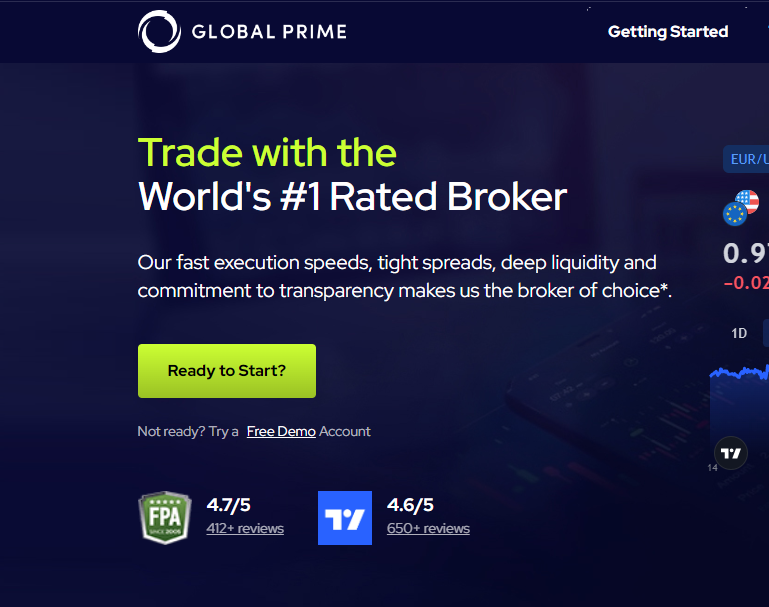A term that often makes headlines and raises eyebrows is insider trading. But what exactly does it mean? And why is it considered bad? Insider trading refers to the illegal practice of trading stocks or other securities based on non-public information.
In simpler terms, it occurs when someone with access to confidential information about a company buys or sells its stock to gain an unfair advantage. This unethical behaviour undermines the fairness and integrity of financial markets, as it gives certain individuals an edge over unsuspecting investors.
Insider trading can result in distorted stock prices and damage investors’ confidence in the market. In this post, we’ll talk about:
- Types of Insider Trading
- Key Elements of Insider Trading
- Why Is Insider Trading Considered Bad?
- High-Profile Insider Trading Incidents That Made Headlines
- Civil and Legal Consequences of Insider Trading
- Ways to Prevent Insider Trading
Types of Insider Trading
Insider trading can take various forms, each with its own unique characteristics. Here are the most common types:
1. Classic insider trading
This involves trading securities based on material, non-public information that the trader obtained through their position within the company. For example, an executive who sells company stock just before a negative announcement is made.
2. Tipping
This occurs when an insider shares material non-public information with someone else, who then trades based on that information. Both the insider who shares the information and the person who trades on it can be held liable.
3. Front-running
In this type of insider trading, a broker or trader executes orders on a security for their own benefit before filling customer orders for the same security. This allows them to profit from the anticipated price movement resulting from their own trades.
4. Misappropriation
This involves trading securities based on material, non-public information that the trader obtained through a breach of duty to the source of the information. For example, a lawyer trading on information obtained from a client.
These are just a few examples of the types of insider trading that exist. The common thread among them is the unfair advantage gained by trading on non-public information.
Key Elements of Insider Trading
To establish a case of insider trading, certain key elements must be present. These elements help define the illegal nature of the activity and determine whether an individual can be held liable. The three main elements of insider trading are:
1. Material non-public information
Refers to information that is not yet available to the public and would likely have a significant impact on the price of a security if it were disclosed. It can include financial results, mergers, acquisitions, regulatory decisions, or any other information that could affect an investor’s decision to buy or sell a security.
2. Breach of fiduciary duty or relationship of trust
Insider trading typically involves individuals who owe a duty of trust or confidence to the source of the non-public information. This can include company executives, employees, directors, attorneys, accountants, or any other person who has access to confidential information.
3. Trading based on the non-public information
The final element is the act of trading on the material non-public information. This can involve buying or selling securities, as well as tipping or passing on the information to others who then trade on it.
Why Is Insider Trading Considered Bad?
Insider trading is considered bad for several reasons, all of which revolve around fairness, integrity, and the proper functioning of financial markets. Here are some key reasons why it is viewed negatively:
1. Unfair advantage
Insider trading gives certain individuals an unfair advantage over other investors who do not have access to the same confidential information. This creates an uneven playing field and undermines the basic principle of fair competition in the financial markets.
2. Market distortion
When insiders trade based on non-public information, it can distort stock prices and create an artificial market. This can mislead other investors and make it difficult for them to make informed decisions.
3. Loss of investor confidence
Insider trading erodes investors’ trust and confidence in the market’s fairness and integrity. When investors believe that the playing field is not level, they may be less inclined to participate, which can have a negative impact on the overall market.
4. Damage to reputation
Companies associated with insider trading incidents often suffer reputational damage. Such incidents can lead to legal actions, regulatory investigations, and negative media attention, all of which can harm a company’s brand and investor perception.
High-profile Insider Trading Incidents That Made Headlines
Insider trading incidents have made headlines numerous times over the years, involving prominent individuals and well-known companies. These cases serve as reminders of the consequences and impact of such unethical behaviour. Here are a few high-profile examples:
1. Albert H. Wiggin (1930)
Albert H. Wiggin’s case in 1930 centred around his alleged short-selling of Chase National Bank stock just before the 1929 market crash. Wiggin, the former chairman of Chase National Bank, was accused of exploiting his position to benefit from the impending collapse of the stock market. He reportedly engaged in short sales while simultaneously reassuring the public about the bank’s stability.
The detection of Wiggin’s activities was largely a consequence of the market crash itself, which prompted increased scrutiny of financial practices. The incident led to regulatory reforms, including the establishment of the Securities Act of 1933 and the Securities Exchange Act of 1934. While Wiggin faced public outrage, no legal action was taken against him, as the regulations addressing such conflicts of interest were not as well-defined at the time.
2. Martha Stewart (2004)
Martha Stewart’s insider trading case in 2004 revolved around her sale of ImClone Systems stock based on non-public information. Stewart, a renowned lifestyle entrepreneur, received a tip about the FDA’s impending negative decision regarding ImClone’s new drug application. Acting on this privileged information, she sold her ImClone shares just before the stock’s value plummeted.
Stewart’s actions were detected through investigations by the Securities and Exchange Commission (SEC) and subsequent legal proceedings. She was charged with securities fraud, obstruction of justice, and making false statements to federal investigators. In 2004, Martha Stewart was found guilty on charges related to obstruction of justice and making false statements, leading to a five-month prison sentence, followed by a period of house arrest.
3. Ivan Boesky (1986)
Ivan Boesky, a prominent stock trader, played a central role in the insider trading scandals of the 1980s. Boesky’s illegal activities involved obtaining and trading on material non-public information. He collaborated with corporate insiders, including investment banker Dennis Levine, to gain advanced knowledge of upcoming mergers and acquisitions.
Boesky’s insider trading activities came to light through investigations by the SEC and the U.S. Attorney’s Office. In 1986, he settled with the SEC, agreeing to pay a record $100 million penalty. Subsequently, he pleaded guilty to criminal charges and cooperated with authorities in providing information about others involved in the scheme. Boesky received a three-year prison sentence, of which he served about two years. His case played a pivotal role in the government’s crackdown on insider trading during that era.
4. R. Foster Winans (1985)
R. Foster Winans, a Wall Street Journal columnist, was embroiled in an insider trading scandal in 1985 that raised ethical concerns within the media industry. Winans, responsible for writing the “Heard on the Street” column, exploited his position by leaking information about his upcoming columns to stockbrokers before they were published. This allowed them to trade on the non-public information and profit from market movements.
Winans’ insider trading activities were discovered through an investigation by the SEC and subsequent legal proceedings. In 1985, he was charged with securities fraud, mail fraud, and insider trading. The case highlighted the intersection of journalism and financial markets, prompting discussions about the need for ethical standards in media. Winans was sentenced to 18 months in prison and fined, marking one of the early instances where a media professional faced legal consequences for insider trading.
5. Galleon Group (2009)
The Galleon Group scandal in 2009 involved hedge fund manager Raj Rajaratnam and several others engaging in an elaborate insider trading network. Rajaratnam orchestrated a scheme where he obtained confidential information from corporate insiders, analysts, and consultants, allowing him to make lucrative trades ahead of market-moving events.
The detection of the Galleon Group’s insider trading activities was a result of extensive investigations by the FBI and the SEC, involving wiretaps and surveillance. In 2011, Raj Rajaratnam was convicted on multiple counts of conspiracy and securities fraud, receiving an 11-year prison sentence—the longest sentence ever imposed for insider trading at that time. Numerous others, including corporate executives and consultants, were also implicated and faced legal consequences, underscoring the widespread nature of the illicit network.
6. SAC Capital Advisors (2013)
SAC Capital Advisors, founded by Steven A. Cohen, faced allegations of widespread insider trading activities that spanned over a decade. The hedge fund was accused of fostering a culture where employees traded on material non-public information to gain an edge in the markets.
The detection of SAC Capital’s insider trading practices came through a multi-year investigation by the SEC and the Department of Justice. In 2013, SAC Capital pleaded guilty to securities fraud and wire fraud charges, agreeing to pay a record $1.8 billion settlement. Steven A. Cohen himself was not criminally charged, but SAC Capital ceased its investment advisory operations. The case demonstrated the significant legal and financial consequences that could be imposed on institutions engaging in systemic insider trading practices.
These are just a few examples of high-profile insider trading incidents that have captured public attention. They demonstrate the serious legal and reputational consequences individuals and companies can face for engaging in such activities.
Also Read: 100 Trading Terms For Beginner Traders And Investors In The Financial Markets
Civil and Legal Consequences of Insider Trading
Insider trading can lead to both civil and criminal consequences for those involved. Let’s take a closer look at the potential penalties:
1. Civil Consequences
In civil cases, individuals or entities can be sued by the Securities and Exchange Commission (SEC) or other regulatory bodies. If found liable, they may be required to pay fines, return any profits made from the illegal trades, and potentially face injunctions or other restrictions on future trading activities.
2. Criminal Consequences
Insider trading is a criminal offence in many jurisdictions. Individuals found guilty can face imprisonment, substantial fines, and probation. The severity of the punishment depends on factors such as the size of the illegal gains, the level of intent, and the individual’s prior criminal record.
It’s worth noting that the consequences of insider trading are not limited to those directly involved. Individuals who tip off others or knowingly trade on non-public information can also be held liable, even if they do not possess the original insider information.
How Do People Get Caught for Insider Trading? Ways to Dedect Insider Trading
Detecting insider trading can be challenging, as individuals involved often take measures to hide their tracks. However, there are several methods and indicators that market regulators and analysts use to identify potential cases of insider trading. Some common ways to detect insider trading include:
1. Abnormal trading patterns
Unusual trading activity, such as a significant increase in volume or price movement without any apparent reason, can be a red flag for potential insider trading. Monitoring trading patterns and identifying abnormal behaviour can help identify suspicious activities.
2. Monitoring news and announcements
Keeping track of news releases, Initial Public Offerings (IPOs), earnings reports, regulatory decisions, and other public announcements can help identify instances where insiders may have traded based on non-public information. Sudden trades preceding significant news events can be indicative of insider trading.
3. Data analysis and surveillance
Market regulators employ advanced data analytics and surveillance systems to monitor trading activities and identify potential insider trading. These systems can detect patterns, anomalies, and connections that may not be apparent to human analysts.
4. Whistleblower tips
Whistleblowers can play a crucial role in uncovering insider trading activities. Individuals who become aware of insider trading can report it to regulatory authorities, often receiving protection and potential financial rewards for their cooperation.
Ways to Prevent Insider Trading
Preventing insider trading requires a combination of regulatory measures, corporate governance practices, and individual responsibility. Here are some ways to prevent insider trading:
1. Establish strong compliance programs
Companies should implement comprehensive compliance programs that include policies, procedures, and training to educate employees about insider trading laws and regulations. These programs should also provide clear guidelines on what constitutes material non-public information and the consequences of insider trading.
2. Enforce strict trading restrictions
Companies can impose trading restrictions on employees, such as blackout periods during which insiders are prohibited from trading company securities. These restrictions help minimize the risk of insiders trading based on non-public information.
3. Encourage reporting and whistleblowing
Companies should establish reporting mechanisms and encourage employees to report suspected insider trading. Whistleblower protection policies can provide individuals with confidence and protection when reporting potential violations.
4. Enhance regulatory oversight
Regulators play a crucial role in preventing and detecting insider trading. By implementing robust surveillance systems and conducting thorough investigations, regulators can deter potential wrongdoers and maintain market integrity.
5. Educate market participants
Educating investors and market participants about the risks and consequences of insider trading is essential. This can be achieved through public awareness campaigns, investor education programs, and collaboration between regulators, industry associations, and educational institutions.
Also Read: A Beginner’s Guide To Stock Market Indices – From NASDAQ To S&P 500
The Bottom Line
Insider trading is a bad practice that undermines the fairness and integrity of financial markets. It gives certain individuals an unfair advantage over unsuspecting investors, distorts stock prices, and damages investor confidence. The consequences of insider trading can be severe, both in terms of civil and legal penalties, as well as reputational harm.
Detecting and preventing insider trading is an ongoing challenge. By implementing comprehensive compliance programs, enforcing trading restrictions, encouraging reporting, and punishing parties involved, we can strive to create a level playing field and maintain the integrity of our financial markets.







